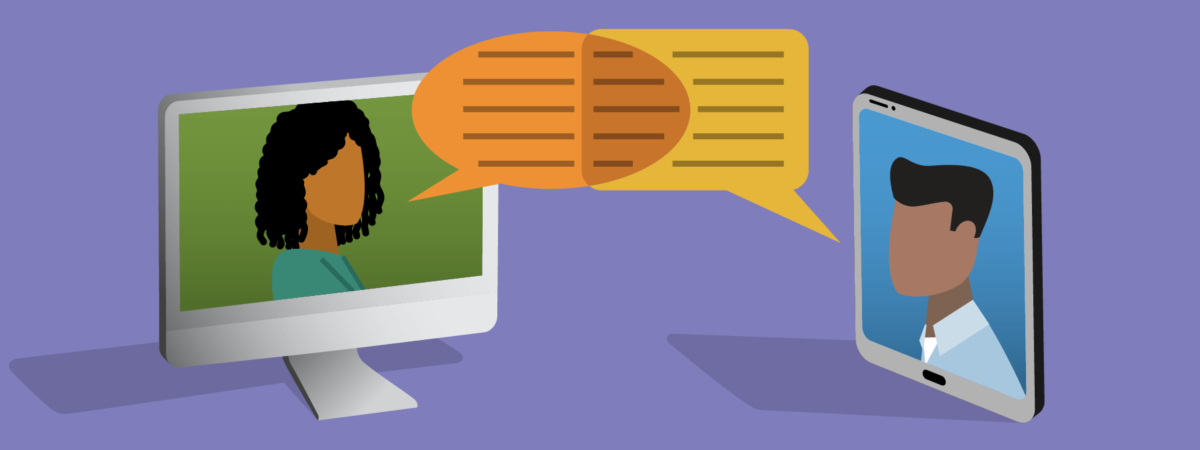
Now more than ever, educators are learning to live with ambiguity. They are responding to circumstances full of complexities and strange surprises, most of which have not been in their control. Our team at Lexington County School District One in South Carolina has focused on mitigating one of these complexities by addressing the human need for connection, support, and ongoing professional learning.
Teachers across the nation were asked to transform how they deliver instruction after schools closed due to COVID-19. Teachers, support staff, and administrators contacted students in a variety of ways to make sure their needs were being met and to remind our kids that they are loved and missed.
It became immediately evident to Ivey Homer, middle school digital learning coach, that supporting teachers with ways to connect and maintain relationships with their students during the extended closure was the essential learning target for everyone. They did not need—nor did they want—another list of resources. They needed and wanted one-on-one support with a familiar face. Not a YouTube video or screenshot-documented tutorial. They wanted a real person in the same, real situation to stand by their sides and march onward into the unknown.
With a clear ask from our teachers through a quick survey, Ivey began offering short tutorials twice a week on how to use and leverage basic-level and district-supported technologies and programs to reach students. These offerings were optional; however, turnout rates proved they were needed. To assist teachers, Ivey connected with them through Google Hangouts or Zoom. She worked through different programs and provided examples showing how they could be used to engage students and develop essential life skills of adaptation and agility.
These “office hours” were informal. There was no script—just modeling and taking impromptu questions from teachers. These sessions lasted 30–45 minutes and often provided insight as to what the next session should touch on.
The surprise need to change our instructional model gave the Professional Learning department the perfect opportunity to reimagine professional learning. In response to teachers’ need for support and connection, we designed what we call “Virtual PL to Go” (VPL2Go).
VPL2Go provides our district’s teachers with peer-to-peer connection, while also growing their skills for our new way of teaching and learning. The pandemic pushed our team to rethink what professional learning could look like, while also meeting teachers’ immediate need to grow in digital learning environments.
When we began to design the VPL2Go series, we had to consider two factors: content and structure. Our content decisions have been driven by myriad data, including student achievement and demographic data, teacher survey data and professional learning requests, school-based work plan areas of growth, digital learning engagement data, and topics outlined in our District Professional Learning Plan.
We began VPL2Go with a series of three sessions that highlighted K-12 strategies to support the five social and emotional learning competencies. We then focused on instructional topics, including manageable digital learning lesson structure and pacing, formative assessment, intervention strategies, and interdisciplinary inquiry experiences.
To support teacher engagement, we use different synchronous and asynchronous structures.
To support teachers’ transfer of the VPL2Go content to practice, we ask participants to complete a reflection survey after each session. The feedback that educators provide on the session surveys also allows our team to quickly adjust VPL2Go content, structures, and supports in response to teacher needs. We also launched a public VPL2Go Library, where each session, presentations, and resource hubs are loaded for educators’ asynchronous use later.
“It was apparent that the participants walked away with new ideas and solutions to challenges they had been trying to solve on their own,” said Howard Bissell, the district’s director of online environments and instructional technology. “The support we provided was timely and relevant to the needs of our educators who are striving to reach their students during this unprecedented time.”
Below we’ve compiled a list of considerations and questions for other teachers, administrators, and instructional leaders to keep in mind for their own shifts to digital learning and virtual personalized coaching. This summer, we’ll continue to provide VPL2Go support for our district’s teachers. Based on the feedback from teachers and the unknown future we are still facing, we want to be ready to support our teachers with whatever is thrown at us next.
Explore the Edtech Marketplace Today blog series to hear other voices from the field share important perspectives on challenges and strategies around technology use for learning.